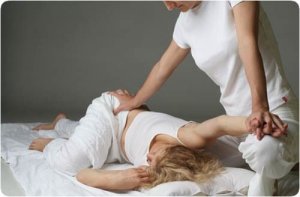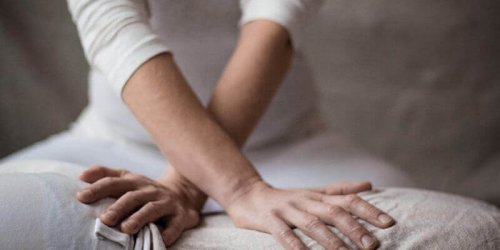The Benefits of Shiatsu Massage for Your Body


Reviewed and approved by Doctor Carlos Fabián Avila
Shiatsu massage originated in Japan but also has some components of traditional Chinese medicine. What sets shiatsu apart is that moderate pressure is applied to the affected areas during this form of massage. This is performed using the thumbs, the palms of the hands, and the elbows.
Pressure using the thumbs coincides with the acupuncture points from traditional Chinese medicine. Kneading, stretching, and mobilization techniques are also used, but to a lesser degree.
What’s a shiatsu massage session like?
A shiatsu massage session takes place in a spacious and airy room. You don’t need to undress, but you should wear comfortable clothing that doesn’t constrict your body. Typically, you will be on the floor or a tatami mat that is firm.
- You can listen to music or receive the therapy in silence.
- Once you’re correctly positioned, the masseur will execute what is known as the “Chi,” which consists of rotating the energies through your body.
- This will make them aware of any potential problems the patient may have.
- Then they’ll exert firm pressure in the areas that need treatment.
Did you know?
How shiatsu massage can help

Some of the ailments that shiatsu massage can treat include:
- Back problems
- Headaches and migraines
- Reduced mobility
- Chronic and acute pain
- Menstrual pain
- Sports injuries
- Depression
- Stress
Effects of shiatsu massage
Pain or nervousness is a natural response of your body when there’s an imbalance.
In the beginning, you may also experience certain unpleasant sensation, such as disturbed sleep, headaches, or the need to use the bathroom more frequently. This is due to the energetic and physical effects of shiatsu massage.
However, after a few sessions your body will get used to it. Then, the beneficial effects will emerge. When this happens, you’ll find a balance between your vital energy and the body.
It’s a good idea to continue to attend shiatsu sessions for a while. This is because you won’t achieve the desired results with just one.
Regardless, shiatsu doesn’t have any harmful effects on the body because there are no chemical substances associated with it.
You did not know?
Other features of shiatsu

In contrast, shiatsu helps mobilize energy through physical work on the muscles and joints, achieving greater flexibility and rotation. However, important to note that acupuncture generally has more powerful effects than shiatsu, because the needle is more precise and works to release energy better.
In short, this natural oriental therapy is very useful to feel better with yourself, because it balances all parts of the body and releases tension.
Some of the amazing benefits of this type of massage include the fact that it’s:
- An excellent technique for pregnant women because it eliminates blockages in the pelvis and hip, improving mobility for giving birth.
- Highly recommended for lumbar problems, sciatica, and other back pain.
- Recommended for people with very strong muscles because blockages can be reached more easily through shiatsu maneuvers than with normal massage.
- Good for treating problems with fluid retention, leg pain, and muscle pain.
- A great way to remind a patient that most ailments come from external stress and that a calm mind is always synonymous with a balanced body.
As an alternative therapy, there is little scientific research about shiatsu. This means that few studies can guarantee that it’s effective when used on a patient.
The best advocates are the patients who have undergone this therapy themselves.
All cited sources were thoroughly reviewed by our team to ensure their quality, reliability, currency, and validity. The bibliography of this article was considered reliable and of academic or scientific accuracy.
- Robinson, N., Lorenc, A., & Liao, X. (2011). The evidence for Shiatsu: A systematic review of Shiatsu and acupressure. BMC Complementary and Alternative Medicine. https://doi.org/10.1186/1472-6882-11-88
- Stevensen, C. (1997). Shiatsu. Complementary Therapies in Nursing & Midwifery. https://doi.org/10.1016/S1353-6117(05)81005-4
- Long, A. F. (2008). The Effectiveness of Shiatsu : Findings from a Cross-European, Prospective Observational Study. The Journal of Alternative and Complementary Medicine. https://doi.org/10.1089/acm.2008.0085
This text is provided for informational purposes only and does not replace consultation with a professional. If in doubt, consult your specialist.








